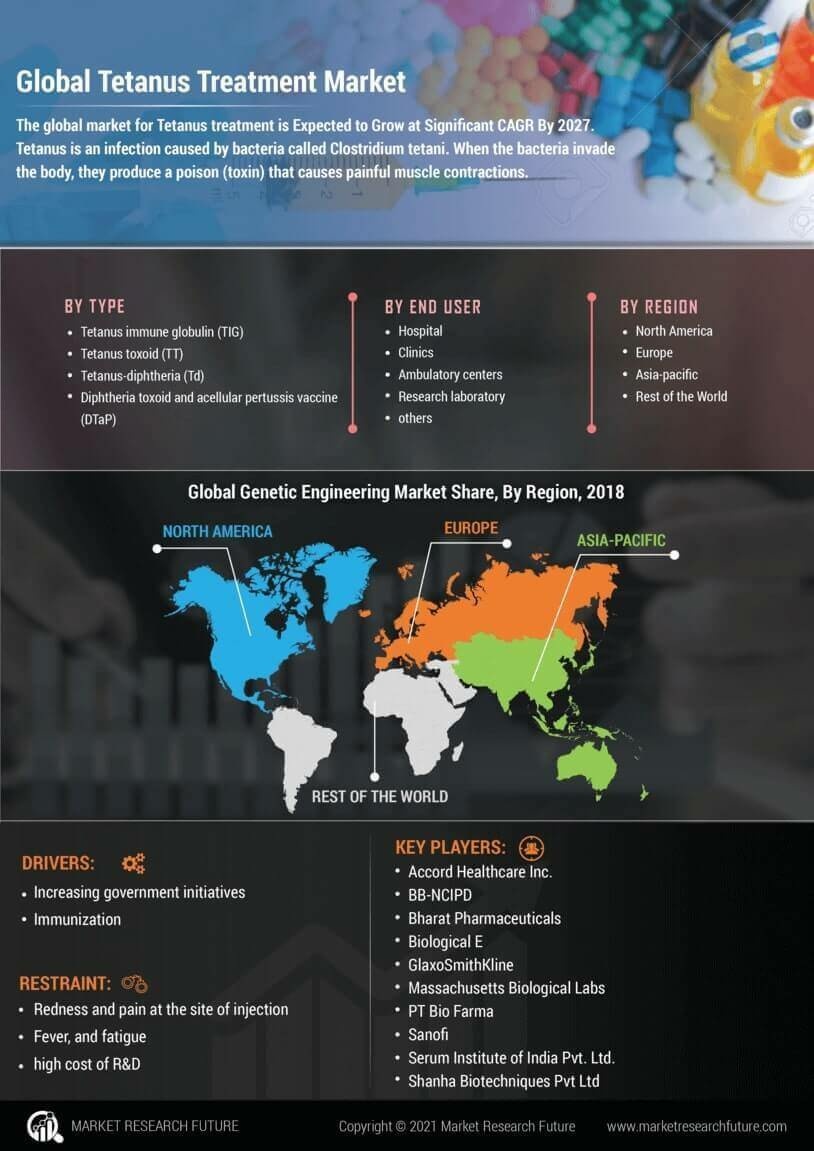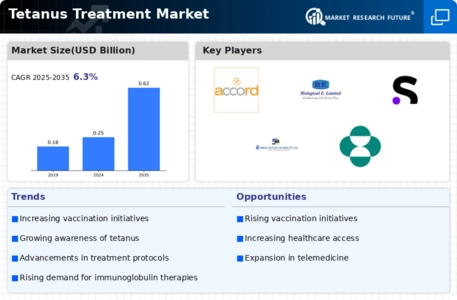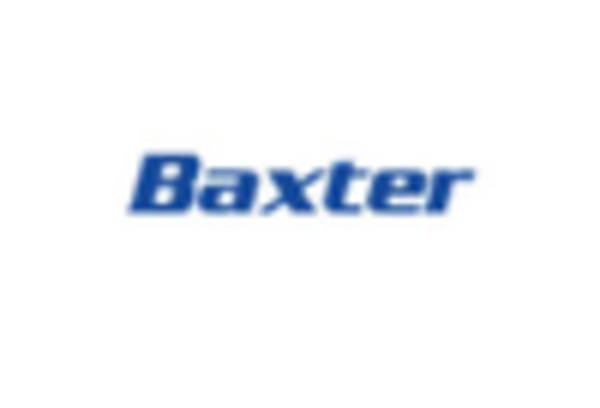Rising Geriatric Population
The aging population is a critical factor influencing the Tetanus Treatment Market. Older adults are at a higher risk for tetanus due to potential gaps in vaccination history and increased susceptibility to infections. As the geriatric population continues to grow, there is a corresponding increase in the demand for effective treatment options. Healthcare systems are likely to adapt their strategies to cater to this demographic, which may include tailored treatment protocols and enhanced access to care. The rising geriatric population could lead to a significant shift in the Tetanus Treatment Market, necessitating innovative approaches to address the unique needs of older patients.
Increased Awareness and Education
There is a growing emphasis on public awareness and education regarding tetanus prevention and treatment, which is influencing the Tetanus Treatment Market. Health organizations are actively engaging in campaigns to inform the public about the risks associated with tetanus and the importance of vaccination. This heightened awareness is expected to lead to increased vaccination rates, which, paradoxically, may also result in a greater need for treatment options in unvaccinated populations. Educational initiatives are likely to foster a more informed public, thereby driving demand for effective treatment solutions. As awareness continues to rise, the Tetanus Treatment Market may witness a shift in focus towards innovative treatment strategies.
Rising Incidence of Tetanus Cases
The Tetanus Treatment Market is experiencing a notable increase in the incidence of tetanus cases, particularly in regions with inadequate vaccination coverage. According to health statistics, the number of reported cases has shown a concerning upward trend, prompting healthcare authorities to prioritize treatment options. This rise is likely attributed to factors such as increased travel to endemic areas and a lack of awareness regarding the importance of vaccination. Consequently, healthcare providers are compelled to enhance their treatment protocols, thereby driving demand for effective therapeutic solutions. The growing incidence of tetanus cases may lead to a surge in investments in research and development, ultimately benefiting the Tetanus Treatment Market.
Government Initiatives and Funding
Government initiatives aimed at combating tetanus are significantly impacting the Tetanus Treatment Market. Various countries are implementing programs to enhance vaccination coverage and improve access to treatment. Increased funding for public health initiatives is likely to facilitate research and development in the field of tetanus treatment. These initiatives may include subsidies for vaccine production and distribution, as well as support for healthcare facilities to improve treatment capabilities. The commitment of governments to address tetanus as a public health concern is expected to create a favorable environment for growth within the Tetanus Treatment Market.
Technological Advancements in Treatment
Technological innovations are playing a pivotal role in shaping the Tetanus Treatment Market. The introduction of advanced treatment modalities, such as monoclonal antibodies and improved immunoglobulin therapies, has the potential to enhance patient outcomes significantly. These advancements not only improve the efficacy of treatments but also reduce the duration of hospital stays, which is crucial in managing healthcare costs. Furthermore, the integration of telemedicine in treatment protocols allows for better patient monitoring and follow-up care, thereby increasing the overall effectiveness of tetanus management. As these technologies continue to evolve, they are likely to attract investment and interest within the Tetanus Treatment Market.

















Leave a Comment